
ANTIQUITIES COLLECTION
|
I had to choose a succinct title for this section, and in doing so may be taking liberties with the term “Antiquities”, as that is generally reserved for man-made objects only. Obviously there are several examples of the natural kind here as well, so please pardon the choice of words! In any case, I’m interested in both kinds of specimens, offering glimpses into eras and cultures long past.
Corinthian Greece, ceramic Aryballos, c. 500 B.C. 11 cm high. Ancient Greek painted pottery piece, with image of a harpy or Άρπυιas. Geometric decoration on neck and base. The harpies were mythological winged women (originally sisters of the goddess Iris) who represented whirlwinds, and were considered both malevolent and beneficent, depending on the age and legend
 |
Keichousaur skeleton. Guanling formation, Xingyi, Guizhou, China. Lower part of Middle Triassic, c. 215,000,000 B.P. ' Keichousaurus Hui ' was a marine reptile of the family pachypleurosaur and likely went extinct in the Triassic-Jurassic extinction event. Keichousaurs were an average of about 12 inches long, had both long necks and long tails, with elongated, five-toed feet. The pointed head and sharp teeth in this genus also indicate that they were aquatic fish-eaters. Some keichousaurs feature an especially developed ulna, suggesting they may have spent some time on land or in marshes.
|
 |
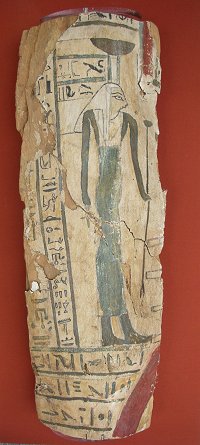 |
| Hellenistic Greece, c. 200 B.C. - carved bust, marble. Woman’s head with flowing hair. |
Egypt, approx 24th Dynasty, c 600 B.C. - approx 24" x 8".
Sarcophagus panel, overlaid with painted bark. This is one of my favorite pieces. Portrayal of Nepthyis, Patroness of women and children, facing right, holding scepter. Verse 24 from the Book of the Dead surrounds the figure.
|
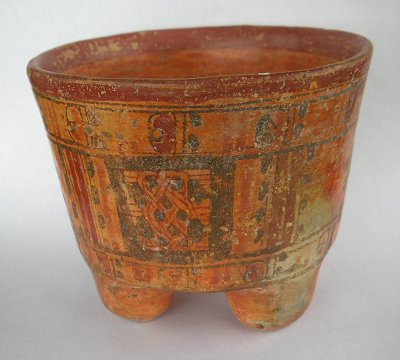
Mayan, c. 700 A.D. 8 cm high. Polychrome four-legged bowl with largely geometric decoration
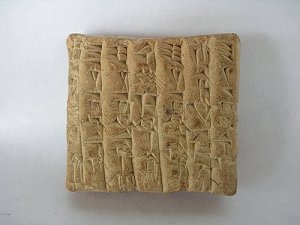 |
 |
| Babylonia, c. 1800 B.C. Small tablet with cuneiform writing | Mousterian handaxe, Middle Paleolithic, Ville Plat, France. c. 80,000 BP, Neanderthal. Chipped chalcedony handaxe.
|
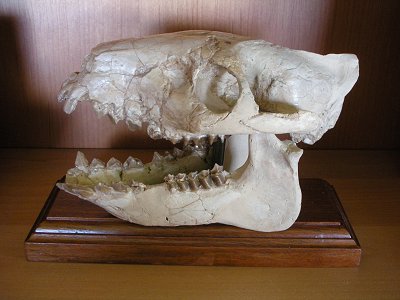 |  |
Oreodont skull. Late Eocene/Middle Miocene, c. 30,000,000 BP. Oreodonts were herbivorous hoofed mammals similar to sheep. They flourished especially in the “Badlands” of the Dakotas and adjacent Nebraska. | Pre-Columbian - Esmereldas, La Tolita (Ecuador). 18 cm high. Whistle in the form of a seated shaman, holding mushrooms (?) and a collection basket |
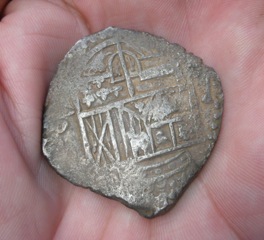
Eight Reale coin (a "piece of eight!") from the shipwreck Nuestra Señora de Atocha. This galleon was bound for Spain, carrying copper, silver, gold, tobacco, gems, jewels, jewelry and indigo, but sank in a hurricane in September of 1622 in the Dry Tortuga Islands, at the tip of the Florida Keys. The ship and its treasure lay undisturbed at the bottom of the sea for over 350 years, until it was discovered in 1985.
|
|
|